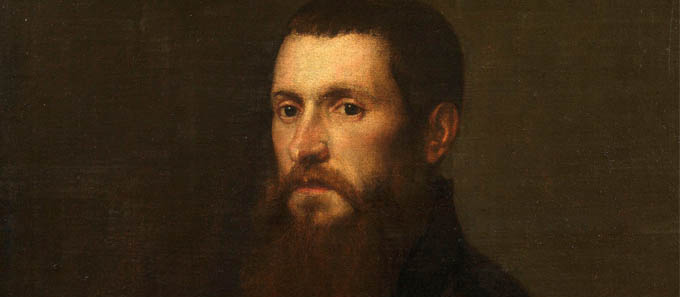
Portraits of Daniele Barbaro by Titian and Veronese at the Palazzo Cini

To mark the 500th anniversary of the birth of Daniele Barbaro (1514- 1570), the Palazzo Cini Gallery will host two masterpieces of Renaissance portraiture by Titian and Paolo Veronese depicting the illustrious
Venetian humanist patrician.
The display of the two works is part of a programme of events devoted to Barbaro promoted by the Veneto Region and the Fondazione Giorgio Cini through a special “Regional Committee for the Celebrations”.
Daniele Barbaro was a highly refined patron and leading light in intellectual debates in Venetian cultural circles, which included Benedetto Lampridio, Domenico Morosini, Giovanni della Casa, Bernardo Navagero, Benedetto Varchi, Sperone Speroni and Pietro Bembo. He also commissioned works from prominent artists and architects, such as Palladio and Veronese, who were involved in his greatest legacy and spiritual testament: the family villa at Maser. Barbaro was a prolific writer of treatises in all elds of knowledge, from mathematics to optics, rhetoric, theology, applied science and philosophy. But he is best known for his translation and commentary of Vitruvius’ De Architectura, published in Venice by Marcolini in 1556. Palladio, who was also involved in the publication, accompanied Barbaro on a study trip to Rome in 1554.
The painting by Titian from the Museo del Prado, Madrid, portrays Barbaro in a three-quarter pose, aged about thirty, with the introspective gaze of a scholar. It can thus be dated to around 1545 and Barbaro’s years in Padua, where he graduated from the university, was a founding member of the Accademia degli Infiammati and received his first appointment from the Serenissima as supervisor for the construction of the Botanic Garden.
Veronese’s portrait from the Rijksmuseum, Amsterdam, depicts him as an older man (1560-61), dressed in clerical vestments with a greyish-purple cape and bishop’s three-cornered hat, alluding to his position as a patriarch (in 1550 he had been made Patriarch of Aquileia). Seated at his writing table, the prelate is portrayed in a meditative mood with two volumes of his Vitruvius in front of him. e painting is one of the most fascinating and vivid works bearing witness to erudite Christian Humanism in 16th-century Venice.
